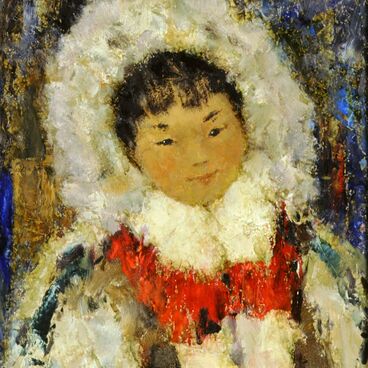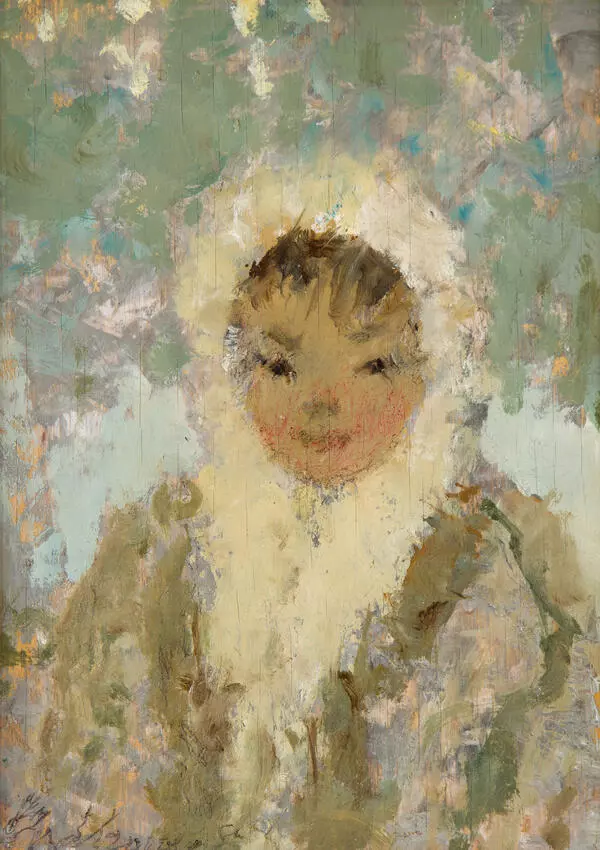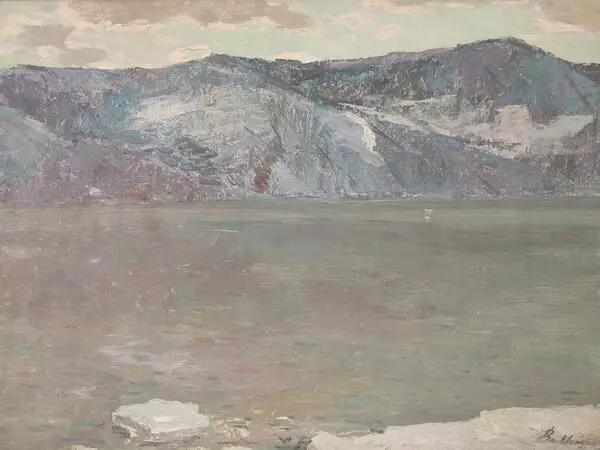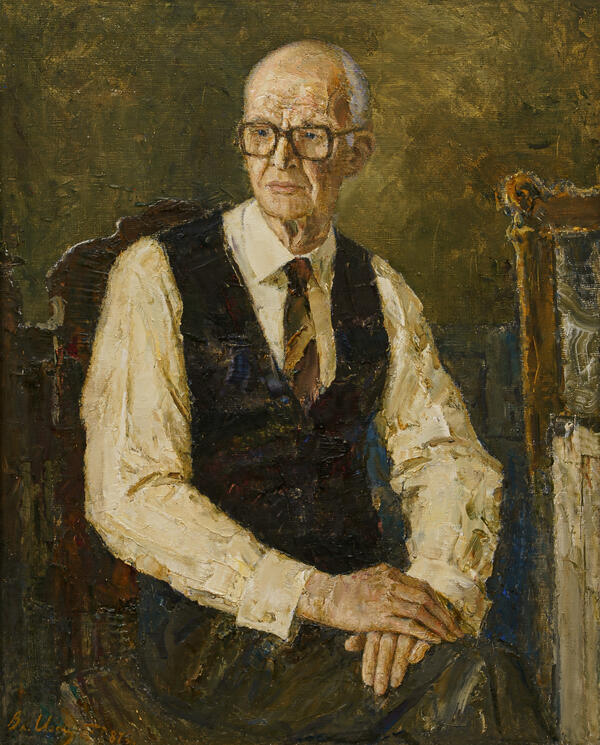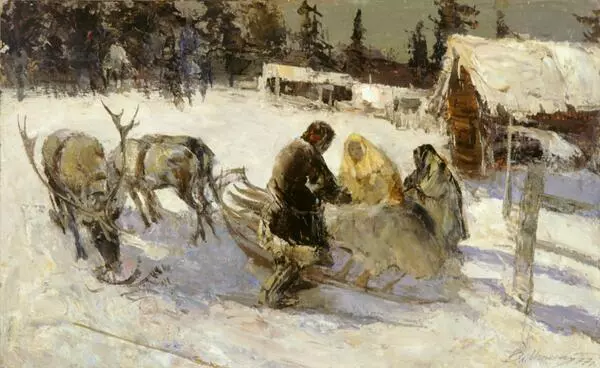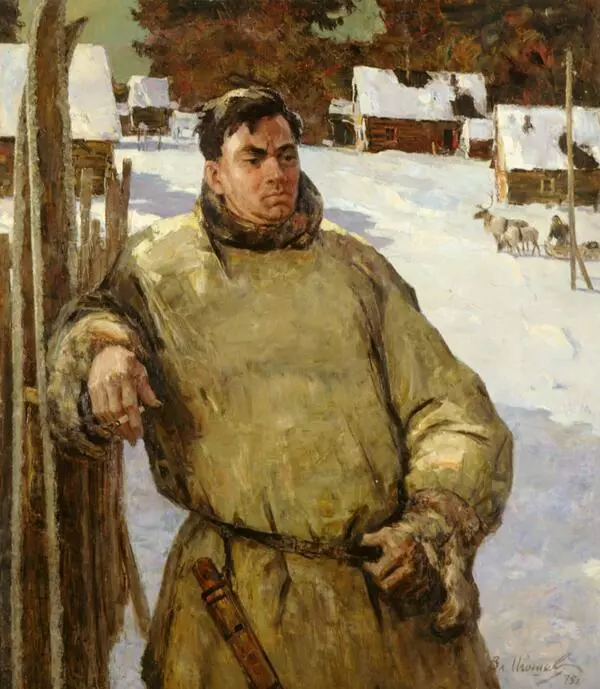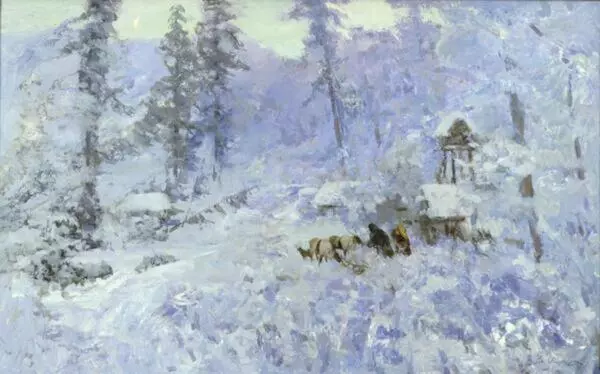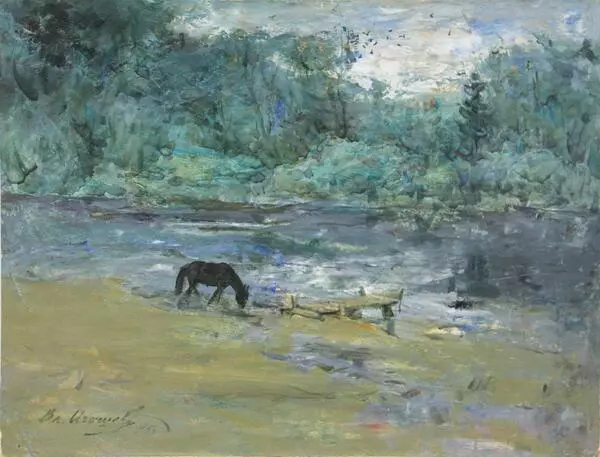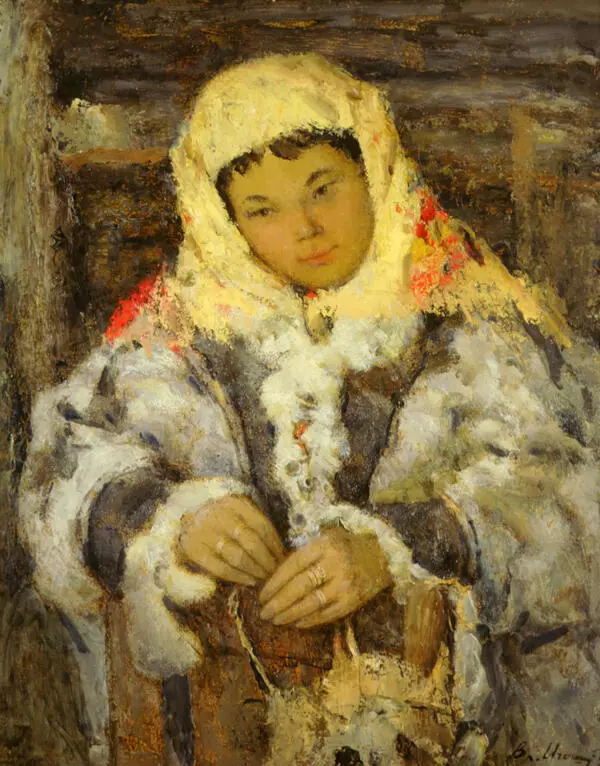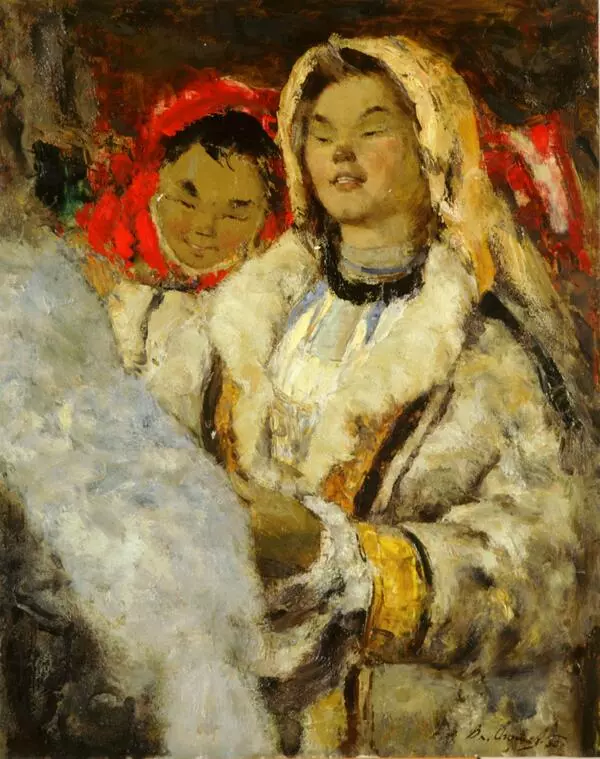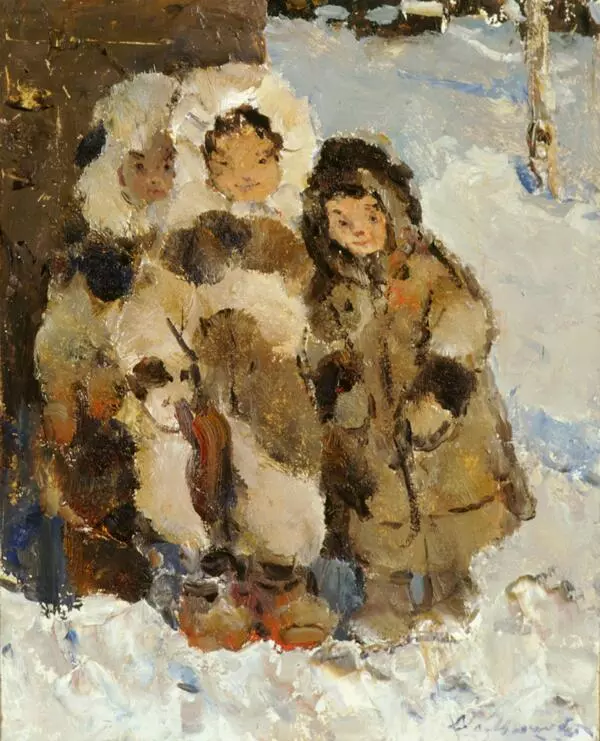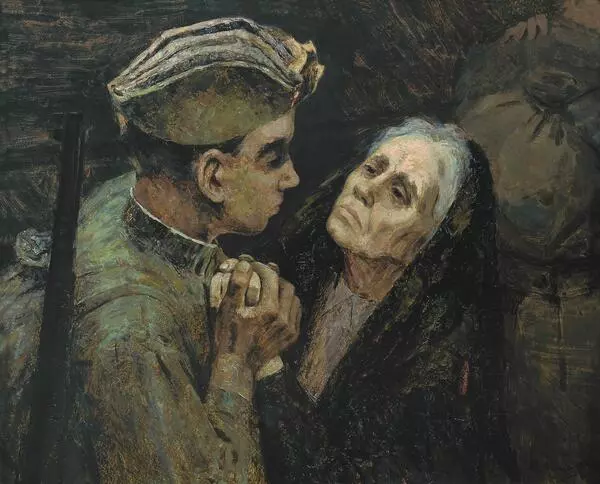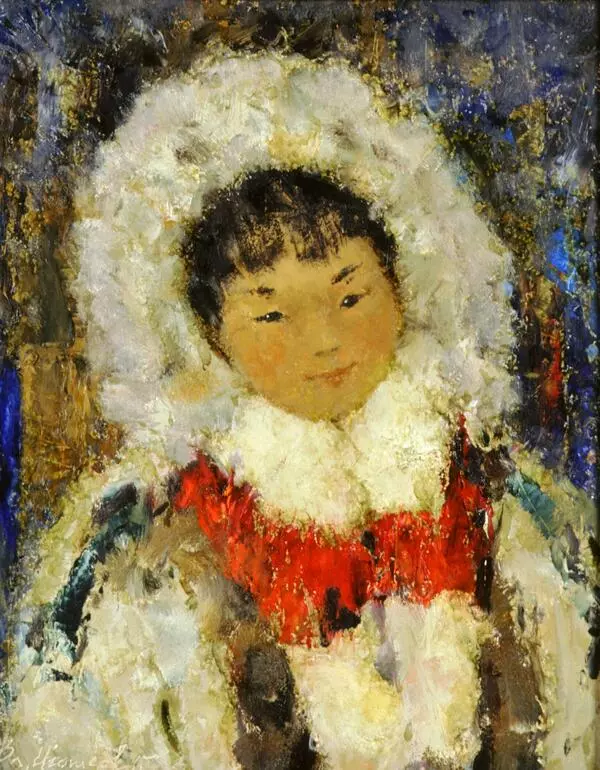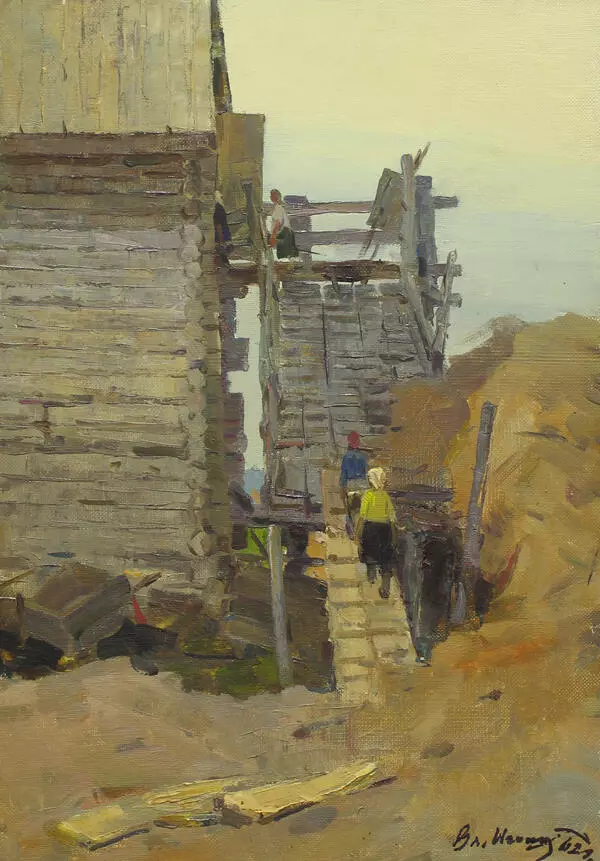The People’s Artist of the USSR Vladimir Igoshev painted many portraits of children. The artist always managed to capture the child’s openness, shyness and curiosity. He didn’t romanticize the reality and did nothing to underline their beauty, the author simply admired his models. Igoshev was very often called a hedonistic painter, which can be seen in a certain aestheticism of his art.
Girl in a Red Kerchief was painted in 1989. The artist described the moment this portrait was created: “I reflexively looked back and was literally stunned. Two eyes, just like two big blackberries, were looking at me through the partition. At first I didn”t even notice them and only later I realized a little 5-year-old girl was looking at me and my work. As soon as I looked back, the girl hid her face, and only a little hand in a deerskin coat holding the wooden partition gave away her presence. As I continued to work, I looked back once again, and the girl hid again. It repeated a few times, and I decided to paint the girl just like this, without making her sit and pose for me. Without saying anything to a girl or her mother, whom I was painting at the moment, I only turned the board from the painter”s case to the side where a cardboard was attached to, and quickly began to paint, sometimes pretending that I continued working on the big portrait. The girl behind my back could see neither my sketch-book, nor the cardboard I used to paint on.”
The Ob-Ugric women used to wear kerchiefs since childhood. Even though a kerchief is not adapted for the northern climate, it was used for a certain “coverture” connected with the “avoidance” rite. The kerchief was tied around the head, and in such a way a woman covered one of her souls. The kerchief was folded in a way that its bottom part was bigger than the upper one. While working a woman tied the ends of the kerchief, wrapping it around her neck, so when needed it was easy to pull it on the face. The folk stories say that women used to cover their faces with the fringe attached to the kerchief.
Girl in a Red Kerchief was painted in 1989. The artist described the moment this portrait was created: “I reflexively looked back and was literally stunned. Two eyes, just like two big blackberries, were looking at me through the partition. At first I didn”t even notice them and only later I realized a little 5-year-old girl was looking at me and my work. As soon as I looked back, the girl hid her face, and only a little hand in a deerskin coat holding the wooden partition gave away her presence. As I continued to work, I looked back once again, and the girl hid again. It repeated a few times, and I decided to paint the girl just like this, without making her sit and pose for me. Without saying anything to a girl or her mother, whom I was painting at the moment, I only turned the board from the painter”s case to the side where a cardboard was attached to, and quickly began to paint, sometimes pretending that I continued working on the big portrait. The girl behind my back could see neither my sketch-book, nor the cardboard I used to paint on.”
The Ob-Ugric women used to wear kerchiefs since childhood. Even though a kerchief is not adapted for the northern climate, it was used for a certain “coverture” connected with the “avoidance” rite. The kerchief was tied around the head, and in such a way a woman covered one of her souls. The kerchief was folded in a way that its bottom part was bigger than the upper one. While working a woman tied the ends of the kerchief, wrapping it around her neck, so when needed it was easy to pull it on the face. The folk stories say that women used to cover their faces with the fringe attached to the kerchief.


